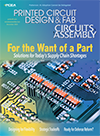Features Articles
 What’s in a name?
What’s in a name?
We probably ask that question about 10,000 times over the course of our lives. It often starts with our own. How many times did you complain – loudly or under your breath – about your own name? “Mine’s too common/uncommon/plain/weird,” etc. A name is just a name, but for many juveniles, it’s their introduction to branding.
I attended a parochial school for eight years. At one time, no fewer than five of the 20 or so boys in my class were named Michael. And “it wasn’t me, it was the other Mike” could only fool the nuns for so long. At one point, probably around third grade, in the faintest of hopes to distinguish myself, I remember telling classmates and teachers to call me by my middle name: John.
That didn’t take either. And so went my early attempts to raise my “personal brand.”
 But don’t obsess over the distribution.
But don’t obsess over the distribution.
Yes, I said it. Normal data are nearly never normal.
In Six Sigma classes we study outliers, shift, drift and special cause events. But what we don’t always consider is that these “unexpected” data points may be part of the process and not as rare as we think.
First, let’s look at a set of screw torque data. The chart in FIGURE 1 is for a set of screw torques taken sequentially from a “smart” driver. We can see the data are normal (p=0.895), and the histogram and time series plot back that up.
 There are more solder balls to inspect, so use oblique views.
There are more solder balls to inspect, so use oblique views.
With board area often at a premium in today’s sophisticated and high-performance electronics, using the third dimension of height to enable greater device functionality is ever more attractive. In particular, package-on-package (PoP) devices have been around for years and are popular for this purpose. From an x-ray inspection point-of-view, the most common POPs can be considered as two BGAs stacked on top of each other. Therefore, the real and “virtual” issues associated with BGAs, as mentioned in previous columns, also come into play for these devices.
However, we now have an additional dimension (sic) to consider in the features seen in the x-ray images, as well as just having a single BGA and anything within, or on the second side of, the board. On top of these, we also have the potential for overlap of solder balls from the two BGA layers (FIGURES 1 and 2). As with BGAs, all the interconnections are underneath the package, and are not visible optically, permitting x-ray the opportunity to make nondestructive inspection analysis. With twice the number of BGAs in the same place, does this mean twice the number of potential problems or more?
 Could vendor collaboration get to the root cause of an intermittent soldering problem?
Could vendor collaboration get to the root cause of an intermittent soldering problem?
Simply put, the ultimate function of a PCB assembly line is to create millions of solder joints without error. This task is complicated by the myriad materials that come together during assembly, and relies on the quality of each lead, pad and sphere to be soldered. When a soldering defect is discovered, it is common practice to presume the soldering materials are the cause, which seems logical, considering it is a solder defect. This assumption is often misplaced. This scenario plays out regularly, as illustrated in a recent case submitted to our failure analysis team for diagnosis.
In this case, the assembler had an intermittent solderability issue with a component. It brought the problem to its local representative’s attention on several occasions. The issue was isolated to a single component and was repairable at the rework station. It was a nuisance but didn’t interfere with production schedules. The situation was difficult to address; it was intermittent and subtle, but persistent. And each time the representative brought its solder supplier’s field engineer for site visits, the solderability issue was not present. Solder companies detest these types of issues because they have a negative effect on customer satisfaction and product perception.
 A poor stencil aperture seal may lead to solder bridging.
A poor stencil aperture seal may lead to solder bridging.
When we think of a gasket, we often relate it to something experienced in our home, perhaps a plumbing gasket or a gas pipe. A tight seal – or gasket – ensures no leaks. In SMT printing, the same theory applies: A good gasket means no solder paste leaks and a better printing result. With stencil printing, gasketing occurs when the aperture cut into the stencil is pressed firmly against the corresponding pad so it forms a seal. To achieve a good gasket, the aperture should be at least 1:1 with the pad size. If the aperture is larger than the pad, a poor gasket will result. Our company generally advises a one mil (25µm) reduction of aperture size to ensure a tight seal. So, for example, if the pad is 125µm x 125µm, an aperture of 100µm x 100µm is recommended. All things being equal, this approach will help form a good, tight gasket.
 A strong communications strategy for front-line employees pays big dividends.
A strong communications strategy for front-line employees pays big dividends.
I routinely tell clients perception is reality. Basically, your company’s brand is what your customer perceives it to be. And, as much as marketers would like to say advertising and positioning strategies influence market perception, the reality is your customers’ perceptions are more likely to be influenced by the people they deal with day-to-day at your company.
Is your program management well-informed and organized, or overworked and the last to know? What are your engineers telling your customers’ engineers? Those conversations shape your customers’ opinions on your capabilities and, often, on how much and what type of business they may award in the future.
That said, in the controlled chaos of the electronics manufacturing services (EMS) industry, companies often forget the importance of having prescribed communications processes and behaviors related to information sharing with customers and the timing of that sharing.
Press Releases
- Altus Reports Growing Demand for Guidance on Convection Reflow Oven Specification
- Coherix Opens New Adhesive-Dispensing Vision Center in Europe
- Pan Pacific Strategic Electronics Symposium Program Finalized
- The Most Critical 2 Inches in SMT Manufacturing – When a Splice Fails, the Line Fails, Full Stop. Throughput and Yield Depend on One Overlooked Moment


